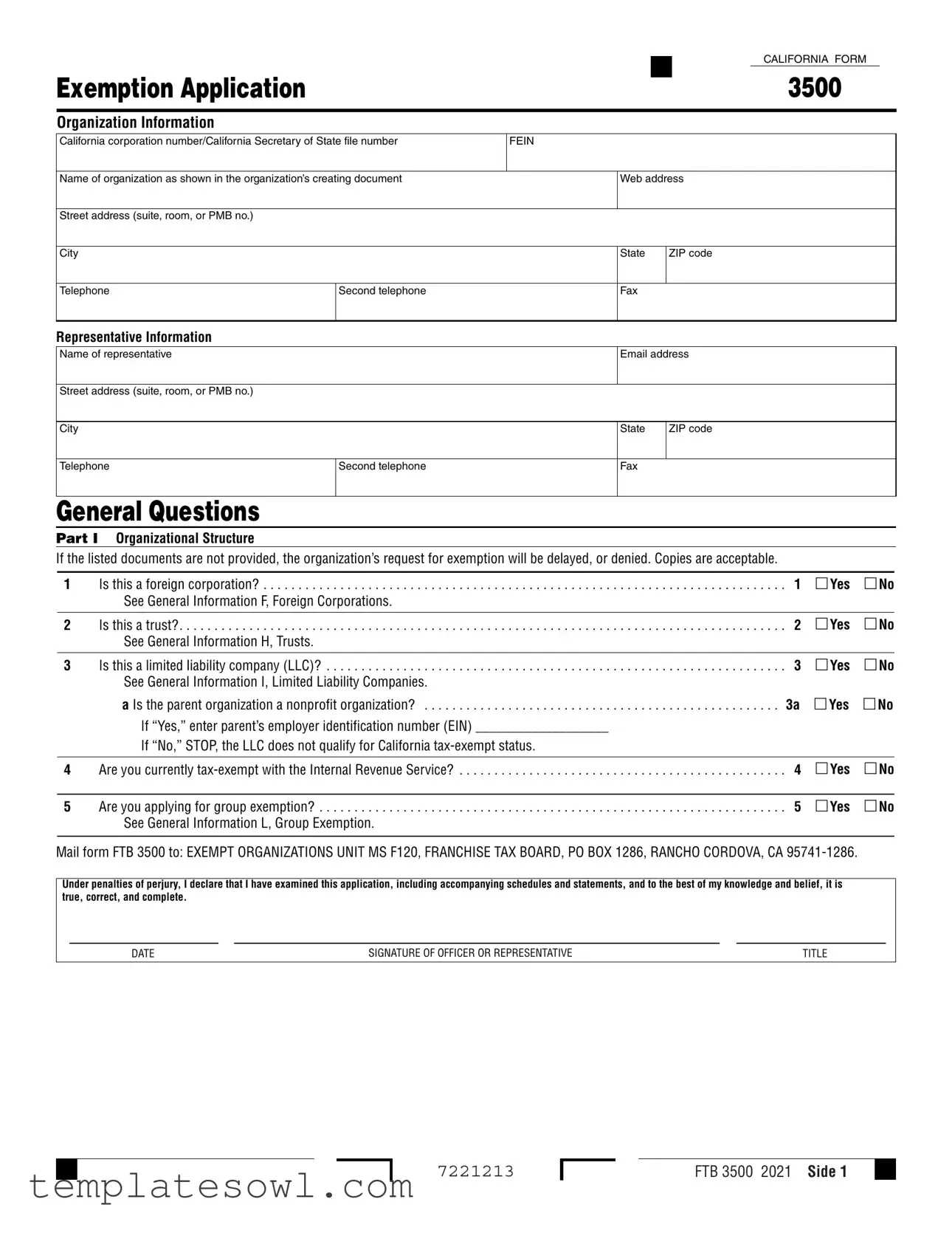What is the Application Exemption form used for?
The Application Exemption form is designed for organizations seeking to obtain tax-exempt status in California. By completing and submitting this form, organizations can formally apply for exemptions from state taxes, provided they meet the necessary criteria as outlined in the tax laws. Completing this form accurately is crucial to avoiding delays or denials in the exemption process.
Who needs to fill out the Application Exemption form?
Any organization that wishes to be recognized as tax-exempt in California must fill out this form. This includes foreign corporations, trusts, limited liability companies (LLCs), and nonprofit organizations. If an organization falls under these classifications, it is essential to complete the form to comply with state regulations and secure tax benefits.
Can organizations outside of California apply for exemption?
Yes, foreign corporations can apply for California tax-exempt status through this form. However, they must provide adequate documentation that demonstrates compliance with both California and federal tax laws. This includes understanding the specific regulations that apply to foreign entities operating within the state.
What happens if the required documents are not submitted with the form?
If an organization fails to submit the necessary documents along with the Application Exemption form, the request for exemption may be delayed or denied. To avoid this issue, it's important to ensure that all required documents are included and are clear, accurate copies of the originals.
What is the significance of the representative information section?
The representative information section allows the organization to designate an individual who will act on its behalf during the exemption application process. This can facilitate communication between the organization and the California Franchise Tax Board, which reviews the application. Including an accurate representative can help streamline the process and prevent potential misunderstandings or delays.
Is prior tax-exempt status necessary to apply?
No, prior tax-exempt status is not required to apply for new tax-exempt status. Organizations that have never been tax-exempt can still fill out and submit the Application Exemption form. However, if the organization’s tax-exempt status was previously revoked, additional information will be needed.
What should organizations include in their narrative of activities?
The narrative of activities must describe past, present, and planned activities in detail. Organizations should provide a clear explanation of each activity, including its objectives, how it supports the organization’s exempt purpose, and relevant timelines. This detailed description helps demonstrate how the organization meets the criteria for tax-exempt status by outlining its charitable or nonprofit purposes.
How should organizations report their financial data?
Organizations must report their financial data accurately, including whether they have filed previous California Exempt Organization Annual Information Returns. If applicable, a detailed income and expense statement for both the current year and the past three years must accompany the application. If the organization has yet to start activities, a proposed budget for the next four years should be attached.
What if an organization participates in fundraising activities?
If an organization participates in fundraising activities, it should indicate this on the form and provide details about the various fundraising programs it conducts or plans to conduct. Accurate reporting of fundraising efforts is essential, as it reflects the organization’s operations and compliance with applicable tax laws.
When will the organization hear back about its application status?
The timeline for receiving a response regarding the Application Exemption form can vary. After submission, the California Franchise Tax Board will review the application and any accompanying documents. Organizations should expect a response within a few weeks, though it may take longer if there are issues or if additional information is needed.










